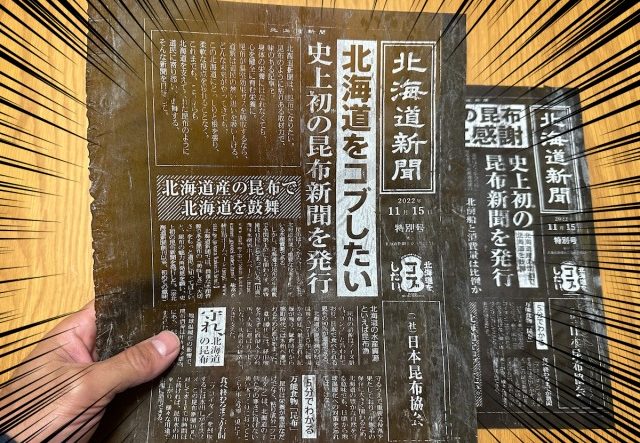
Extra! Extra! Eat all about it!
In the northern reaches of Japan lies the large island prefecture of Hokkaido. Although famous for many things such as its great food, natural scenery, and roads, it doesn’t get nearly the respect it deserves as Japan’s leading producer of the kelp variety known as kombu.
This is something local newspaper Hokkaido Shimbun is hoping to rectify by raising awareness through projects such as their annual Hokkaido Kombu Shimbun. This special issue of Hokkaido Shimbun made entirely of kombu and printed with edible ink is released each year on Kombu Day, 15 November.
Lack of kombu awareness in Hokkaido is a major problem. Even though the prefecture is the number-one producer of this kelp, consumption there ranks 41st out of Japan’s 47 prefectures. However, the Hokkaido Kombu Shimbun has proven to be a major catalyst in turning people on to the algae. It sells out almost instantly every year with its limited run of 100 copies and is considered so rare that some people choose to preserve it rather than eat it.
Our writer Masanuki Sunakoma was one of the lucky few who was able to get copies of both the local and national editions of Hokkaido Kombu Shimbun this year.
First, Masanuki sat down at his table and read through the kelp news. It had a lot of interesting information about kombu, such as the word “kombu” having been derived from the language of the indigenous Ainu people of Hokkaido as well as the stats about production and consumption mentioned above.
Once he finished reading, our reporter then proceeded to eat his newspaper – or “newskelp” rather. Like the kombu sold in supermarkets, it was dried and very hard but as it is some of the finest kombu produced in Japan it was extremely flavorful and aromatic.
Hokkaido Shimbun recommends soaking the news in one liter (34 ounces) of water for 10 hours. Readers can then use the stock for cooking, soups, or just drinking straight. Masanuki, however, decided to take just half a sheet and simmer it for 30 minutes in the same amount of water.
By removing the news just before it rose to a boil, he was able to get an umami-rich broth.
As both an excellent source of news and dietary fiber, Masanuki was very satisfied with the Hokkaido Kombu Shimbun. It also had the added benefit of making him feel like a spy for eating his information.
He wonders if edible news isn’t something that could catch on. Baked goods with current events printed on them would be great for commutes and the blank seaweed around rice balls seems like a huge waste of print space.
Photos ©SoraNews24
● Want to hear about SoraNews24’s latest articles as soon as they’re published? Follow us on Facebook and Twitter!

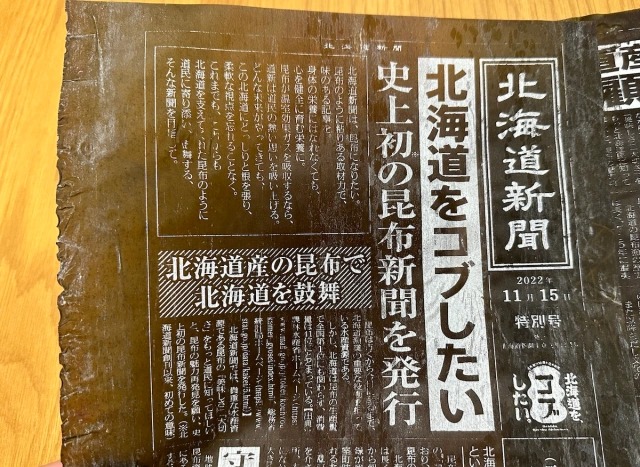
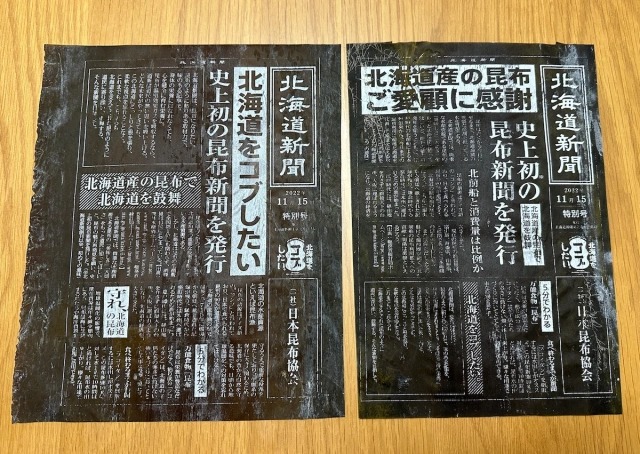
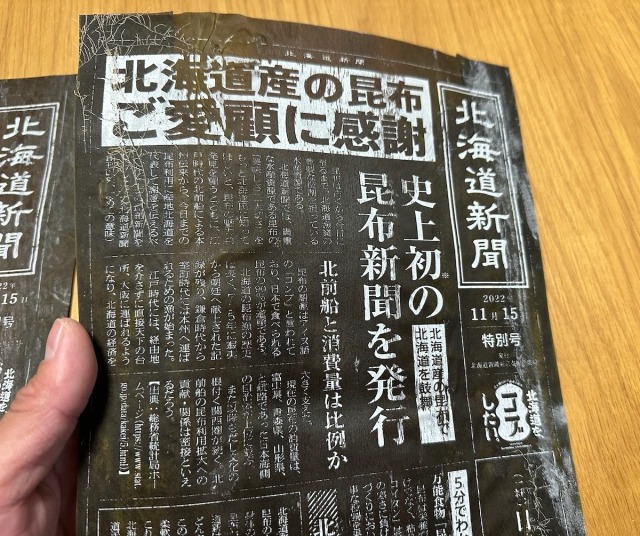
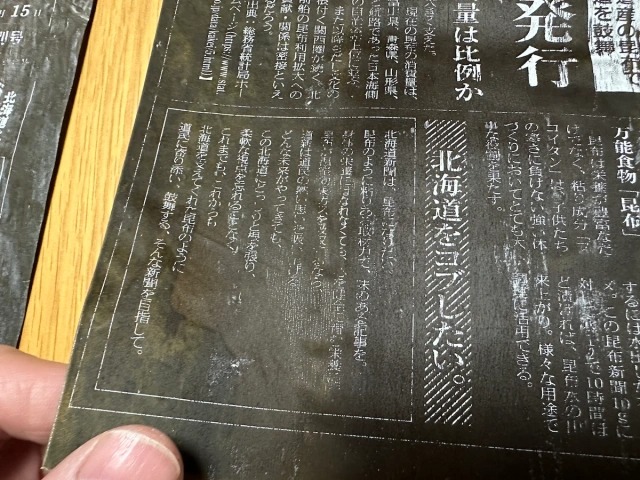
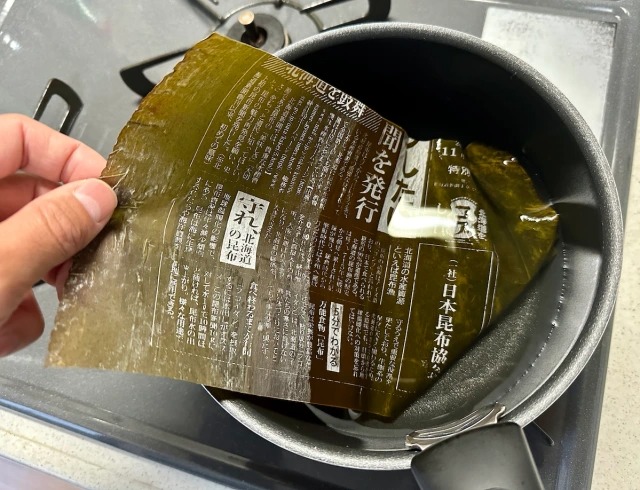
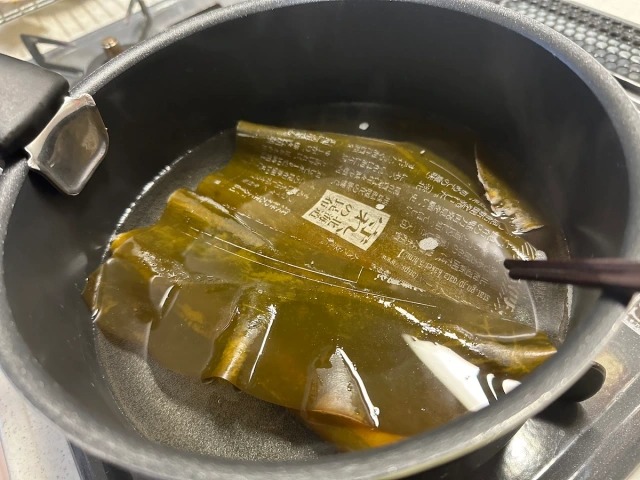
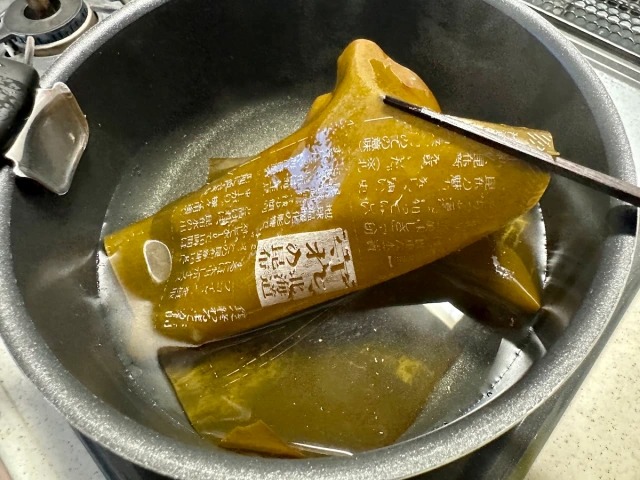
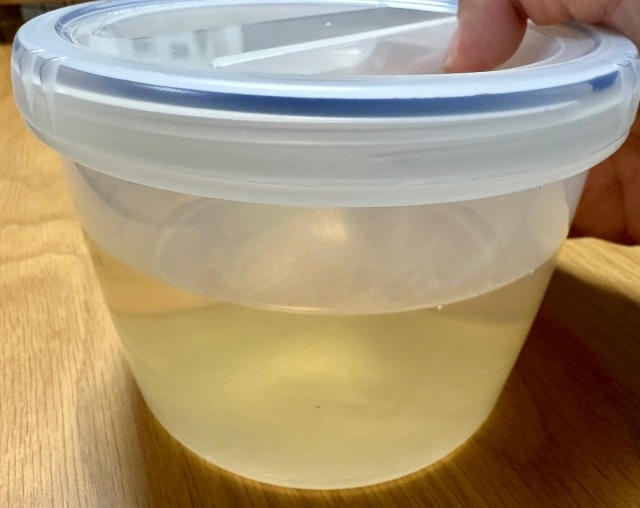

 Cups made of kelp from Hokkaido add a touch of umami to whatever you put inside
Cups made of kelp from Hokkaido add a touch of umami to whatever you put inside Don’t forget that the best convenience store in northern Japan has branches farther south too
Don’t forget that the best convenience store in northern Japan has branches farther south too Starbucks Japanese New Year’s Frappuccino: Too delicious to wait for January to drink【Taste test】
Starbucks Japanese New Year’s Frappuccino: Too delicious to wait for January to drink【Taste test】 Hokkaido resort offering vibrant bounty of gelato lookalikes…made of potato?!?
Hokkaido resort offering vibrant bounty of gelato lookalikes…made of potato?!? Hey, have you eaten the news? – Japanese “noodle newspaper” comes with writing on the soba
Hey, have you eaten the news? – Japanese “noodle newspaper” comes with writing on the soba Foreigner’s request for help in Tokyo makes us sad for the state of society
Foreigner’s request for help in Tokyo makes us sad for the state of society Japanese-style accommodation at the new Premium Dormy Inn hotel in Asakusa will blow your mind
Japanese-style accommodation at the new Premium Dormy Inn hotel in Asakusa will blow your mind Seaside scenery, history, and so many desserts on Yokohama’s Akai Kutsu【Japan Loop Buses】
Seaside scenery, history, and so many desserts on Yokohama’s Akai Kutsu【Japan Loop Buses】 Mikado Coffee is a 76-year-old coffee chain with a major celebrity connection
Mikado Coffee is a 76-year-old coffee chain with a major celebrity connection Japan’s summertime towelket pillowcases are even better with the addition of Ghibli stars【Photos】
Japan’s summertime towelket pillowcases are even better with the addition of Ghibli stars【Photos】 Red light district sushi restaurant in Tokyo shows us just how wrong we were about it
Red light district sushi restaurant in Tokyo shows us just how wrong we were about it Japanese city loses residents’ personal data, which was on paper being transported on a windy day
Japanese city loses residents’ personal data, which was on paper being transported on a windy day Should you add tartar sauce to Japanese curry rice? CoCo Ichi makes diners an unusual offer
Should you add tartar sauce to Japanese curry rice? CoCo Ichi makes diners an unusual offer Hey, Japanese taxi driver! Take us to your favorite restaurant in Tsuruga City!
Hey, Japanese taxi driver! Take us to your favorite restaurant in Tsuruga City!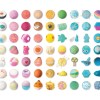 Lush Japan-exclusive bath bombs from Harajuku store coming to stores worldwide this spring
Lush Japan-exclusive bath bombs from Harajuku store coming to stores worldwide this spring McDonald’s new Happy Meals offer up cute and practical Sanrio lifestyle goods
McDonald’s new Happy Meals offer up cute and practical Sanrio lifestyle goods Japanese ramen restaurants under pressure from new yen banknotes
Japanese ramen restaurants under pressure from new yen banknotes French Fries Bread in Tokyo’s Shibuya becomes a hit on social media
French Fries Bread in Tokyo’s Shibuya becomes a hit on social media New private rooms on Tokaido Shinkansen change the way we travel from Tokyo to Kyoto
New private rooms on Tokaido Shinkansen change the way we travel from Tokyo to Kyoto Tokyo Tsukiji fish market site to be redeveloped with 50,000-seat stadium, hotel, shopping center
Tokyo Tsukiji fish market site to be redeveloped with 50,000-seat stadium, hotel, shopping center Beautiful Ghibli sealing wax kits let you create accessories and elegant letter decorations【Pics】
Beautiful Ghibli sealing wax kits let you create accessories and elegant letter decorations【Pics】 Secret Kitchen bento serves Japanese flowers, birds, wind and moon in a box, but is it worth it?
Secret Kitchen bento serves Japanese flowers, birds, wind and moon in a box, but is it worth it? New definition of “Japanese whiskey” goes into effect to prevent fakes from fooling overseas buyers
New definition of “Japanese whiskey” goes into effect to prevent fakes from fooling overseas buyers Our Japanese reporter visits Costco in the U.S., finds super American and very Japanese things
Our Japanese reporter visits Costco in the U.S., finds super American and very Japanese things Studio Ghibli releases Kiki’s Delivery Service chocolate cake pouches in Japan
Studio Ghibli releases Kiki’s Delivery Service chocolate cake pouches in Japan All-you-can-drink Starbucks and amazing views part of Tokyo’s new 170 meter-high sky lounge
All-you-can-drink Starbucks and amazing views part of Tokyo’s new 170 meter-high sky lounge More foreign tourists than ever before in history visited Japan last month
More foreign tourists than ever before in history visited Japan last month New Pokémon cakes let you eat your way through Pikachu and all the Eevee evolutions
New Pokémon cakes let you eat your way through Pikachu and all the Eevee evolutions Disney princesses get official manga makeovers for Manga Princess Cafe opening in Tokyo
Disney princesses get official manga makeovers for Manga Princess Cafe opening in Tokyo Sales of Japan’s most convenient train ticket/shopping payment cards suspended indefinitely
Sales of Japan’s most convenient train ticket/shopping payment cards suspended indefinitely Sold-out Studio Ghibli desktop humidifiers are back so Totoro can help you through the dry season
Sold-out Studio Ghibli desktop humidifiers are back so Totoro can help you through the dry season Japanese government to make first change to romanization spelling rules since the 1950s
Japanese government to make first change to romanization spelling rules since the 1950s Ghibli founders Toshio Suzuki and Hayao Miyazaki contribute to Japanese whisky Totoro label design
Ghibli founders Toshio Suzuki and Hayao Miyazaki contribute to Japanese whisky Totoro label design Doraemon found buried at sea as scene from 1993 anime becomes real life【Photos】
Doraemon found buried at sea as scene from 1993 anime becomes real life【Photos】 Tokyo’s most famous Starbucks is closed
Tokyo’s most famous Starbucks is closed One Piece characters’ nationalities revealed, but fans have mixed opinions
One Piece characters’ nationalities revealed, but fans have mixed opinions We asked a Uniqlo employee what four things we should buy and their suggestions didn’t disappoint
We asked a Uniqlo employee what four things we should buy and their suggestions didn’t disappoint Japan’s most popular MSG maker had to battle some nasty rumors 100 years ago
Japan’s most popular MSG maker had to battle some nasty rumors 100 years ago Tips from Japan to make your skin extra beautiful! It begins with a bath and…
Tips from Japan to make your skin extra beautiful! It begins with a bath and… Should you warm up your convenience store onigiri rice balls in the microwave?【Taste test】
Should you warm up your convenience store onigiri rice balls in the microwave?【Taste test】 Say “I love you” with seaweed: Message kombu is the tastiest way to tell her you care
Say “I love you” with seaweed: Message kombu is the tastiest way to tell her you care Bottles containing flying fish now available from Japanese vending machines in Tokyo
Bottles containing flying fish now available from Japanese vending machines in Tokyo This London ramen restaurant’s super-strange ramen shocks our Japanese taste-tester
This London ramen restaurant’s super-strange ramen shocks our Japanese taste-tester Drinkable rice balls appear in Japan, allow you to chug the country’s favorite snack on the go
Drinkable rice balls appear in Japan, allow you to chug the country’s favorite snack on the go New Japan rail pass gives you a week of free rides in a huge space to chase the cherry blossoms
New Japan rail pass gives you a week of free rides in a huge space to chase the cherry blossoms Heading off the beaten path in Hokkaido for a beautiful view and local sweets
Heading off the beaten path in Hokkaido for a beautiful view and local sweets Krispy Kreme releases Japanese fox doughnuts in Japan!
Krispy Kreme releases Japanese fox doughnuts in Japan! Seaweed in your green tea Frappuccino? Starbucks Japan has a bold idea for its New Year’s drink
Seaweed in your green tea Frappuccino? Starbucks Japan has a bold idea for its New Year’s drink Georgia Coffee releases a brand new banana-flavored version of its Hokkaido-only Milk Coffee
Georgia Coffee releases a brand new banana-flavored version of its Hokkaido-only Milk Coffee We push our luck and buy a lucky bag from a Japanese vending machine
We push our luck and buy a lucky bag from a Japanese vending machine Yakisoba company teams up with shampoo brand, launches new flavor that boosts hair growth
Yakisoba company teams up with shampoo brand, launches new flavor that boosts hair growth “Nurse Goldfish” in Hokkaido amazingly appears to help disabled friend eat every time
“Nurse Goldfish” in Hokkaido amazingly appears to help disabled friend eat every time
Leave a Reply